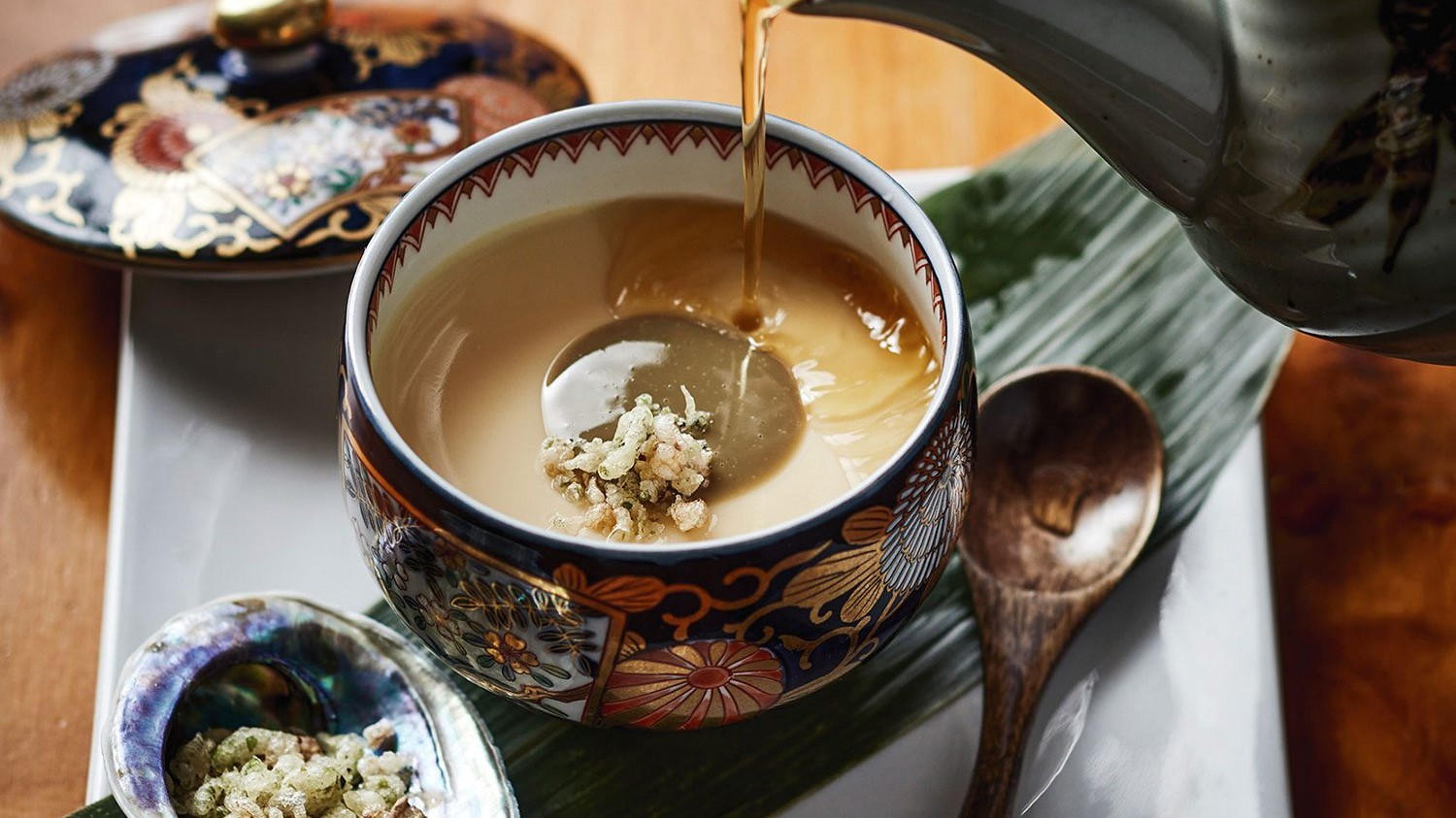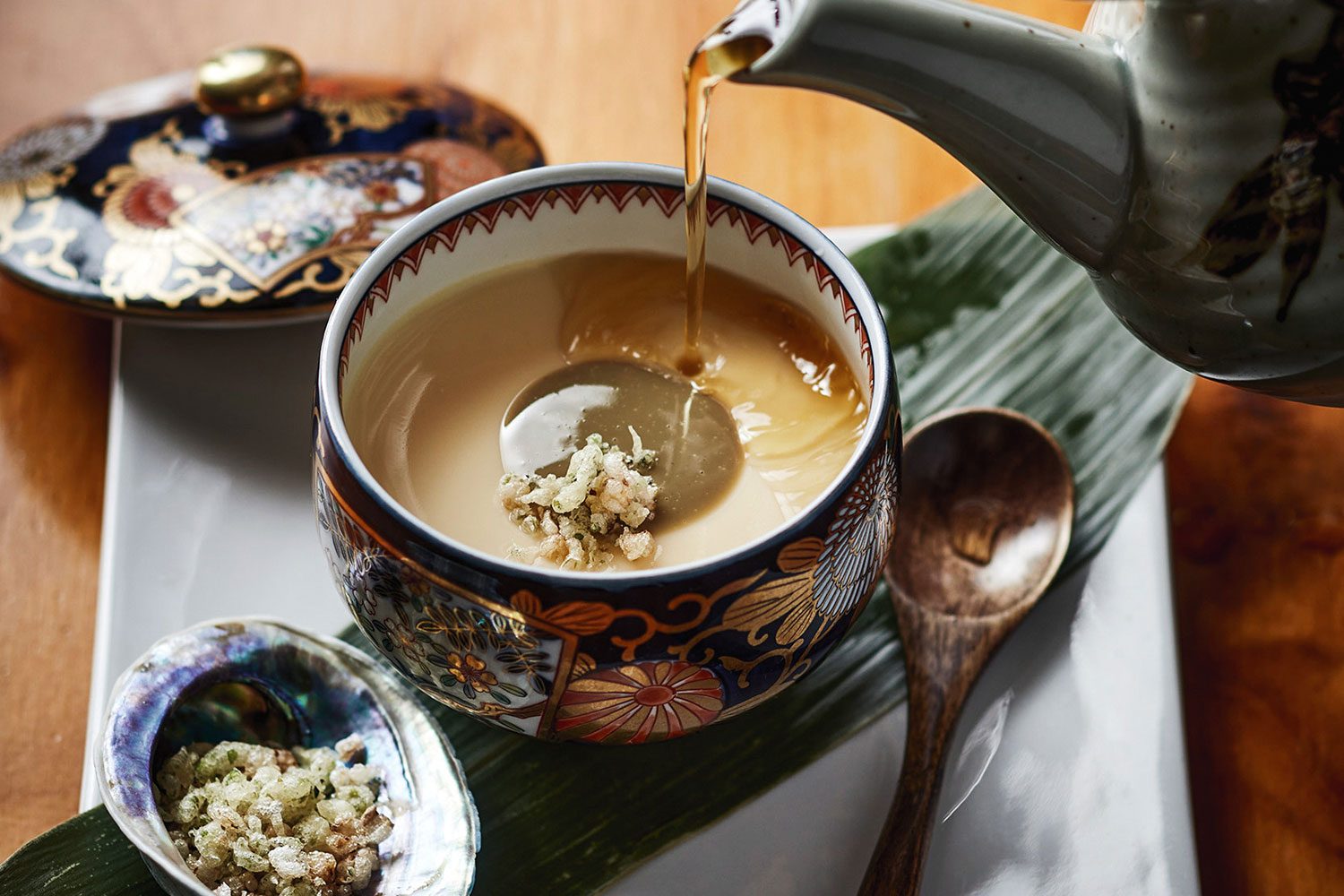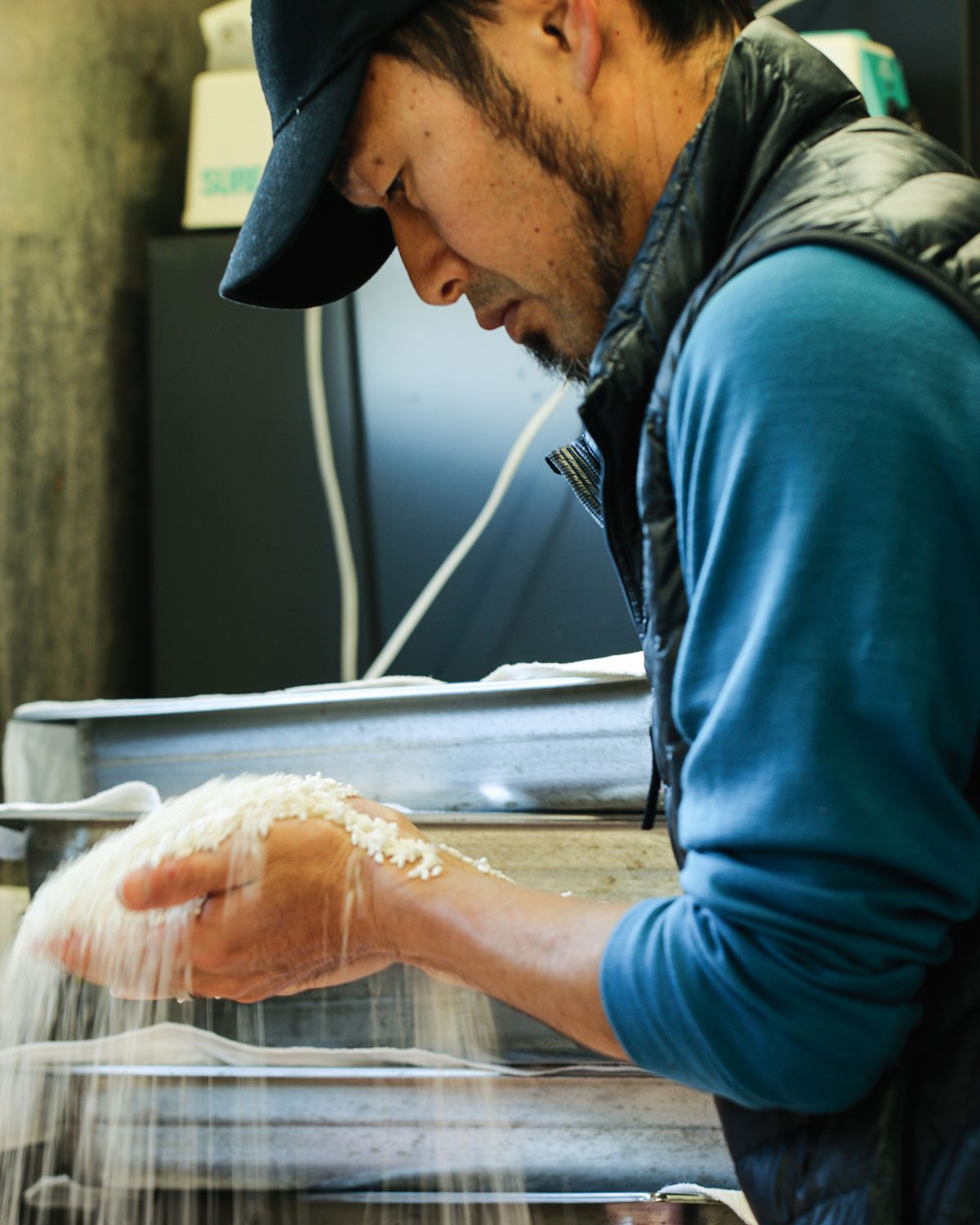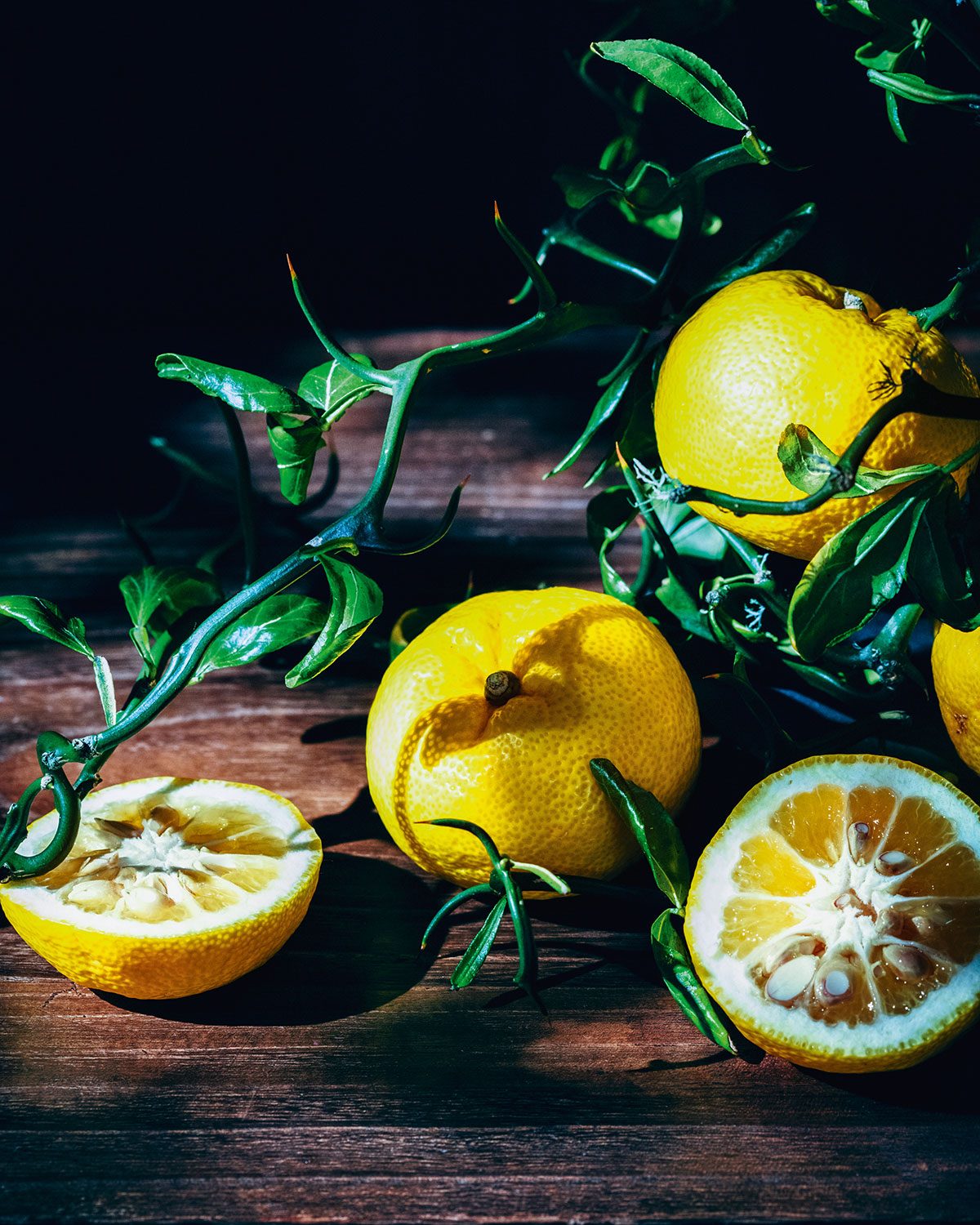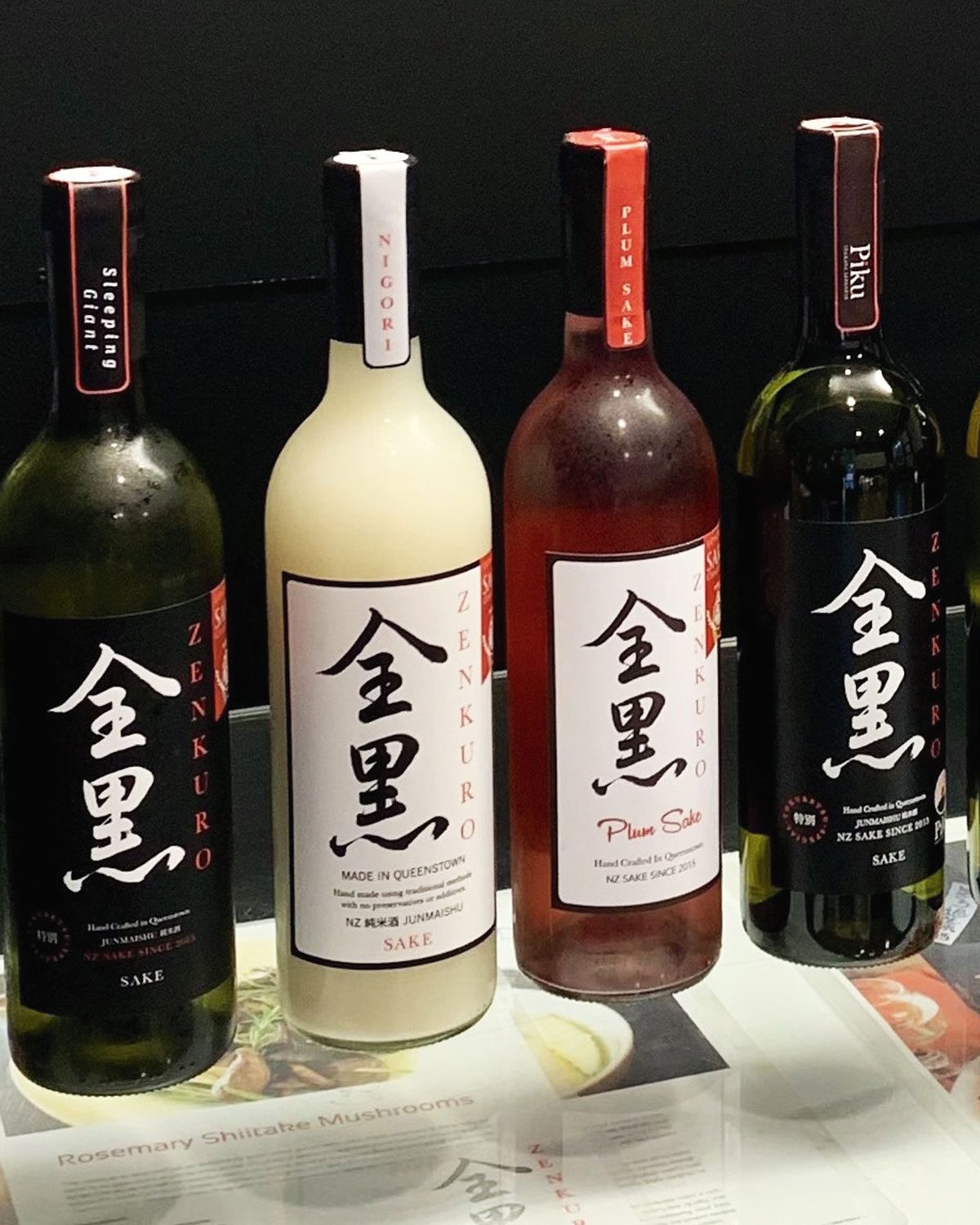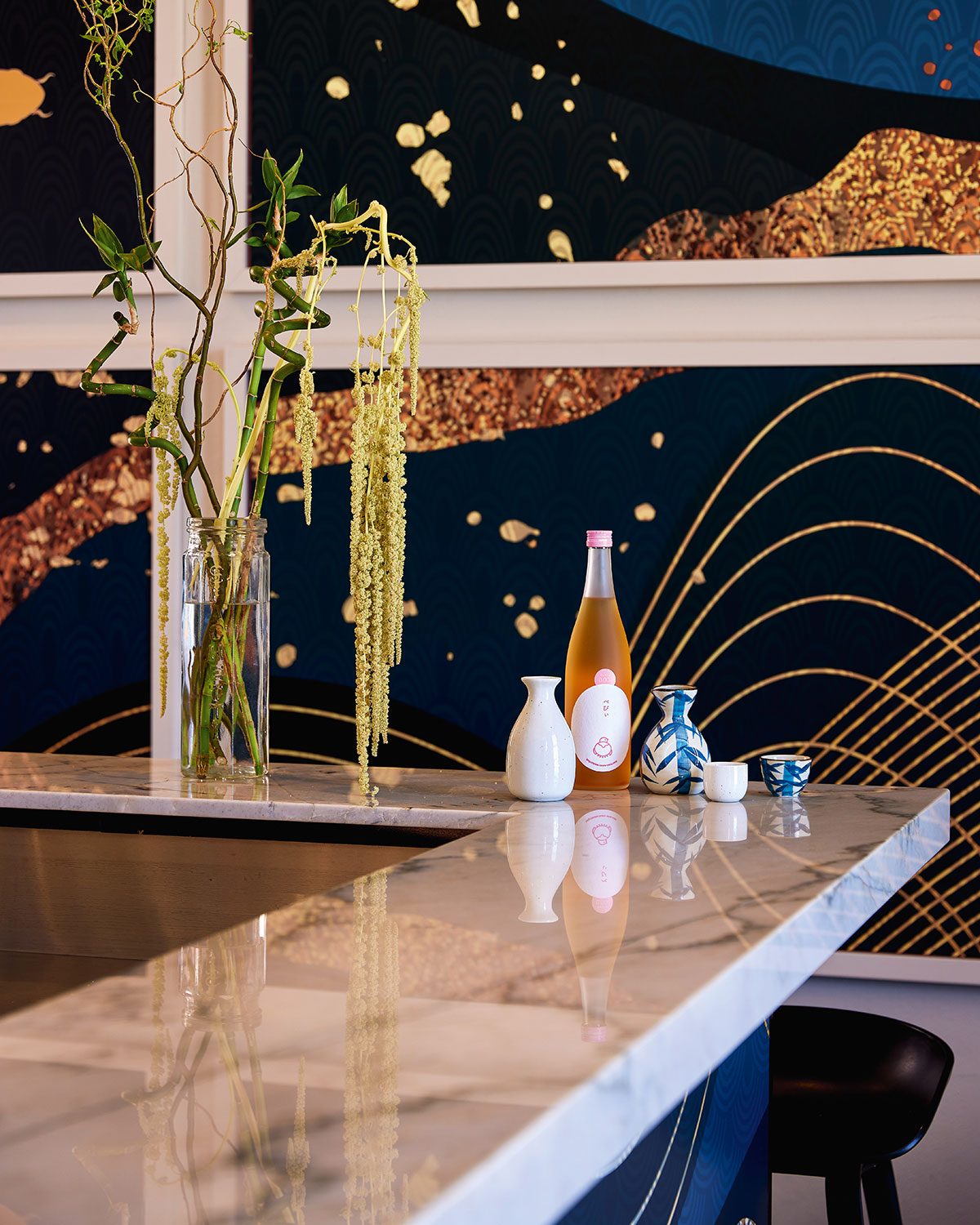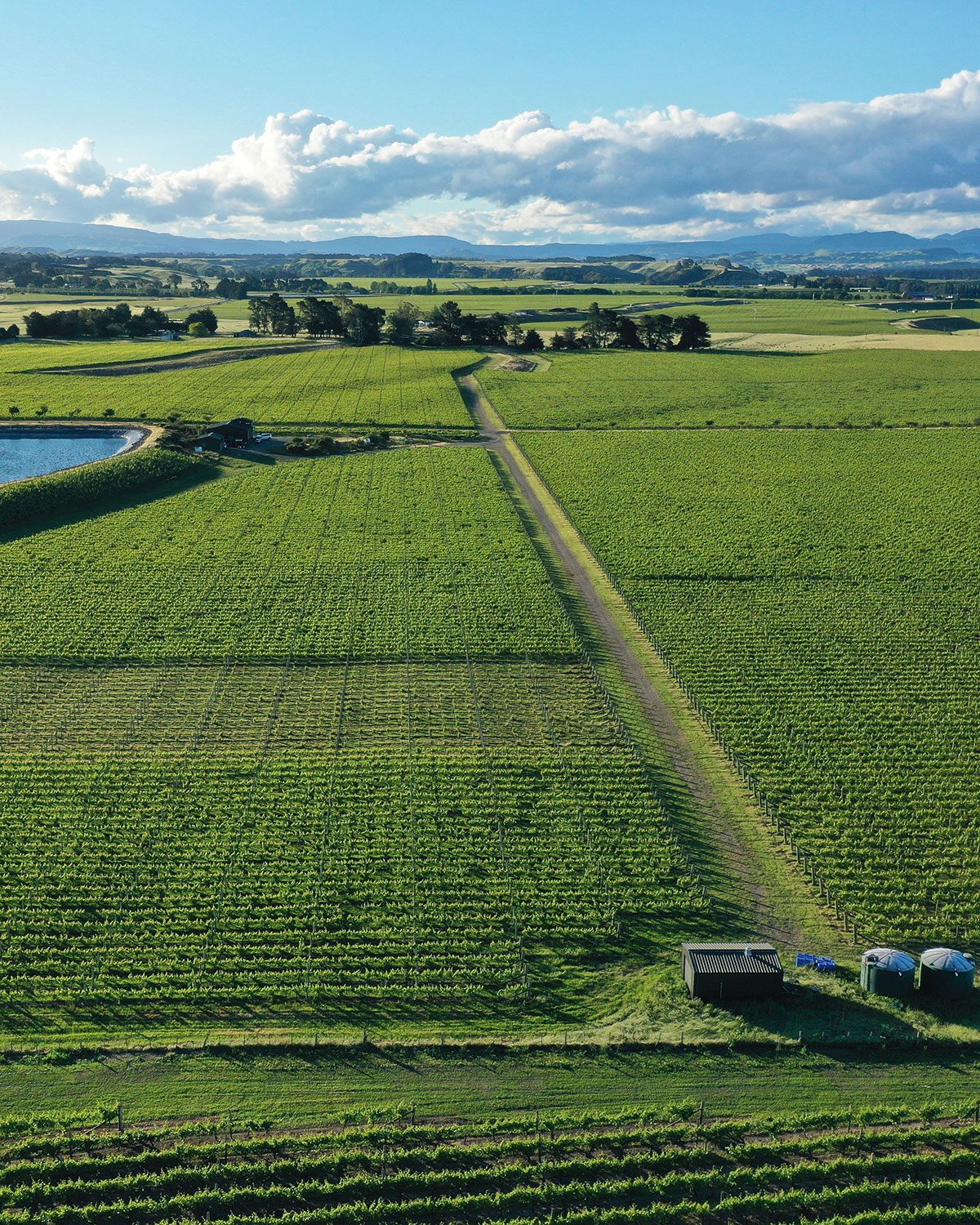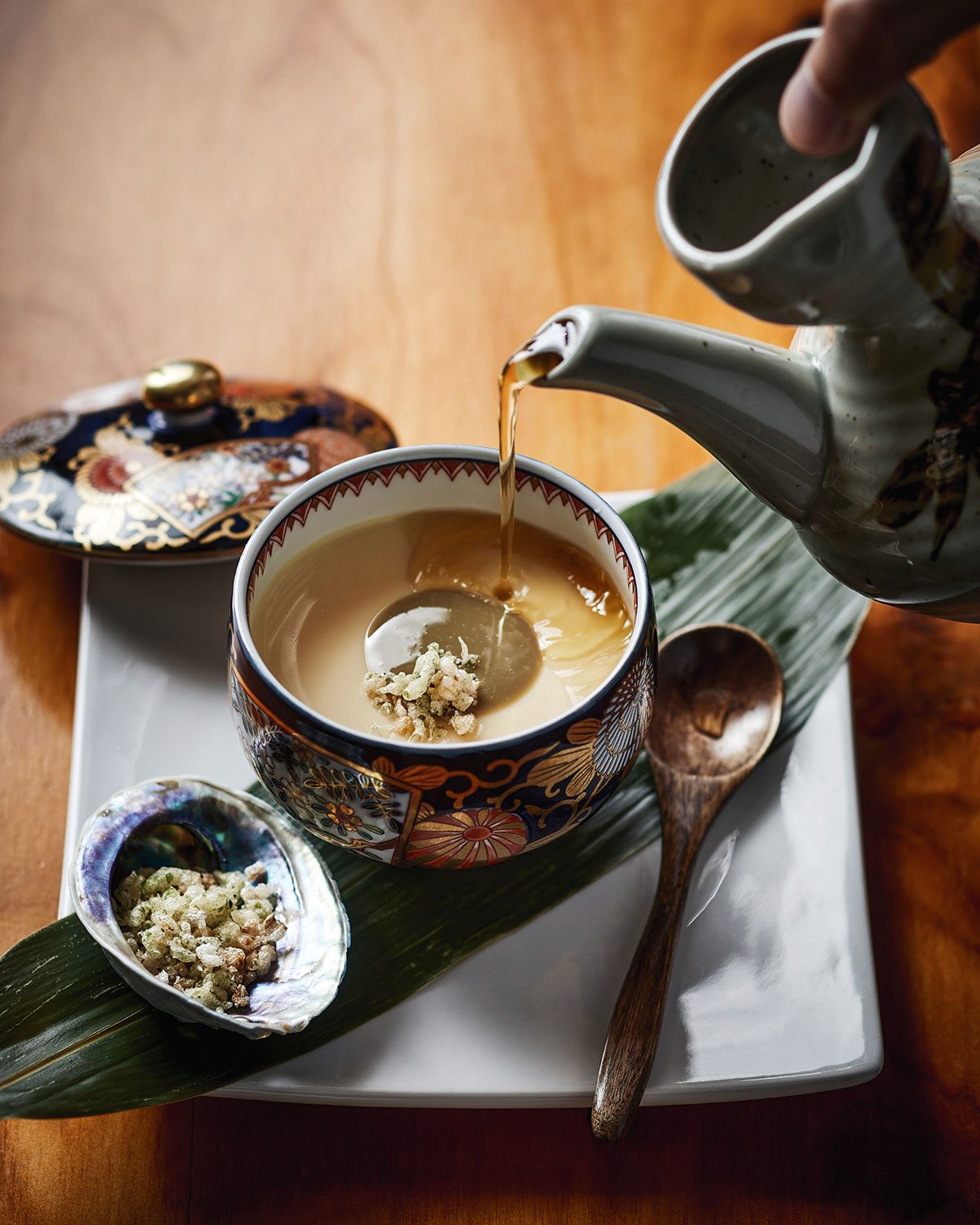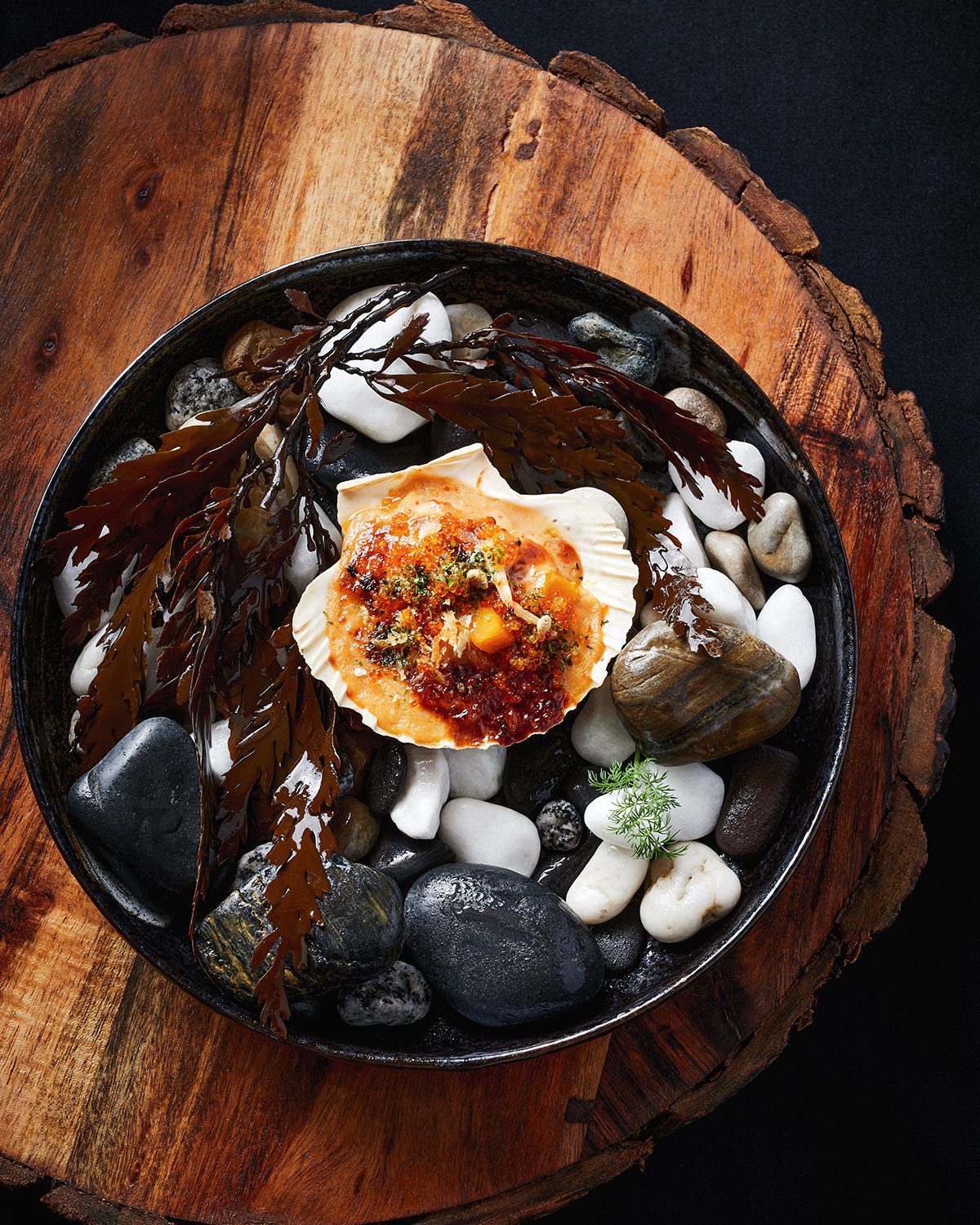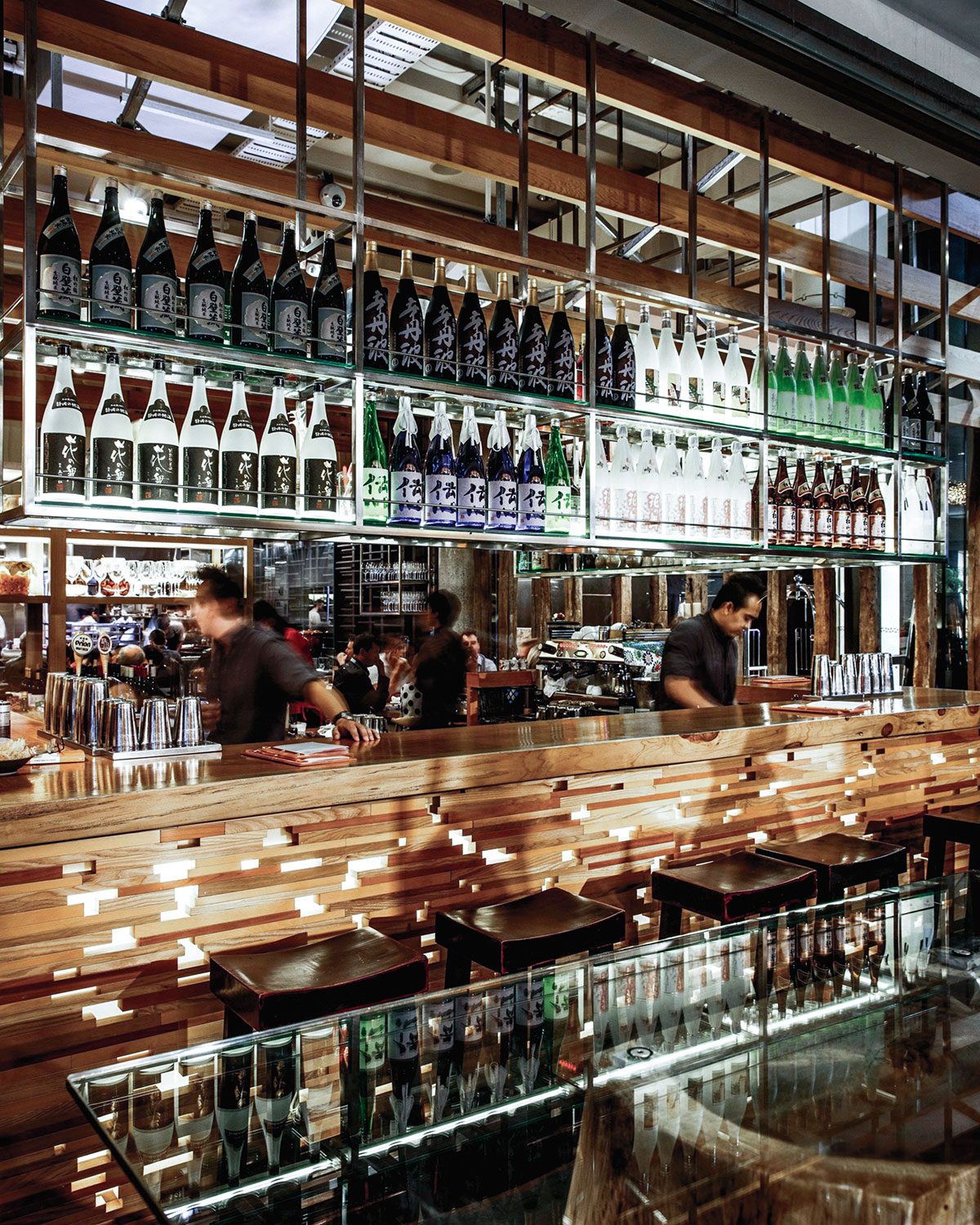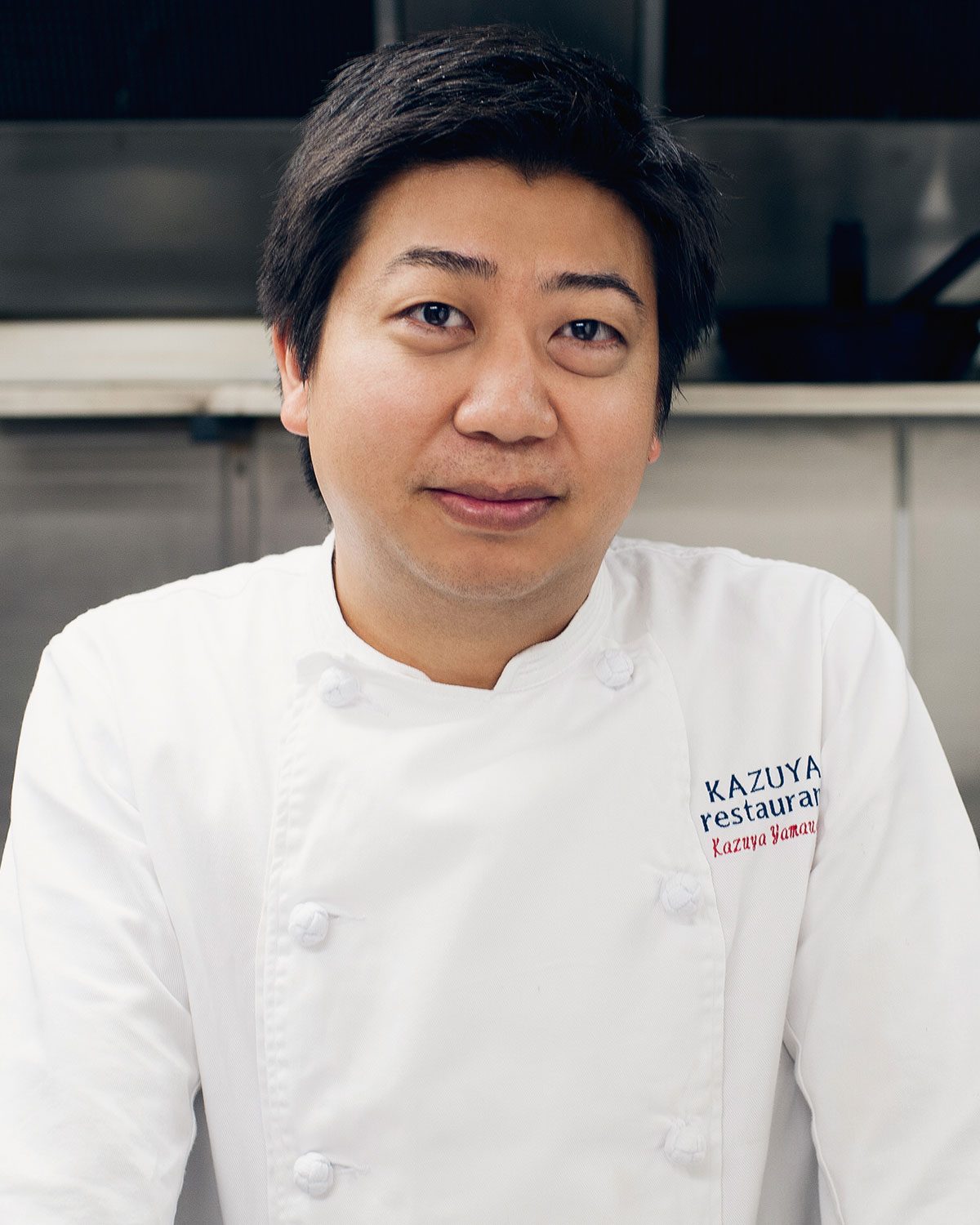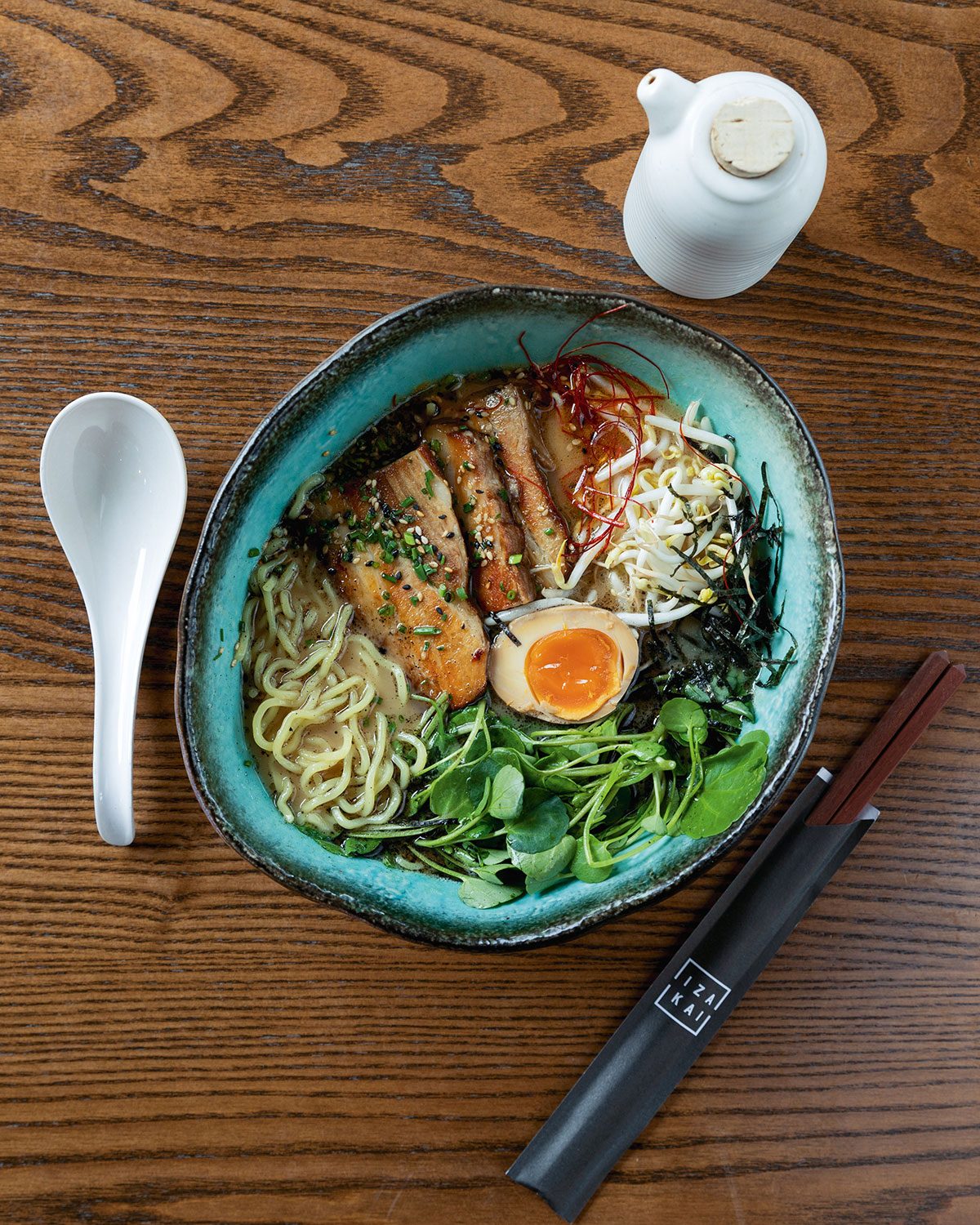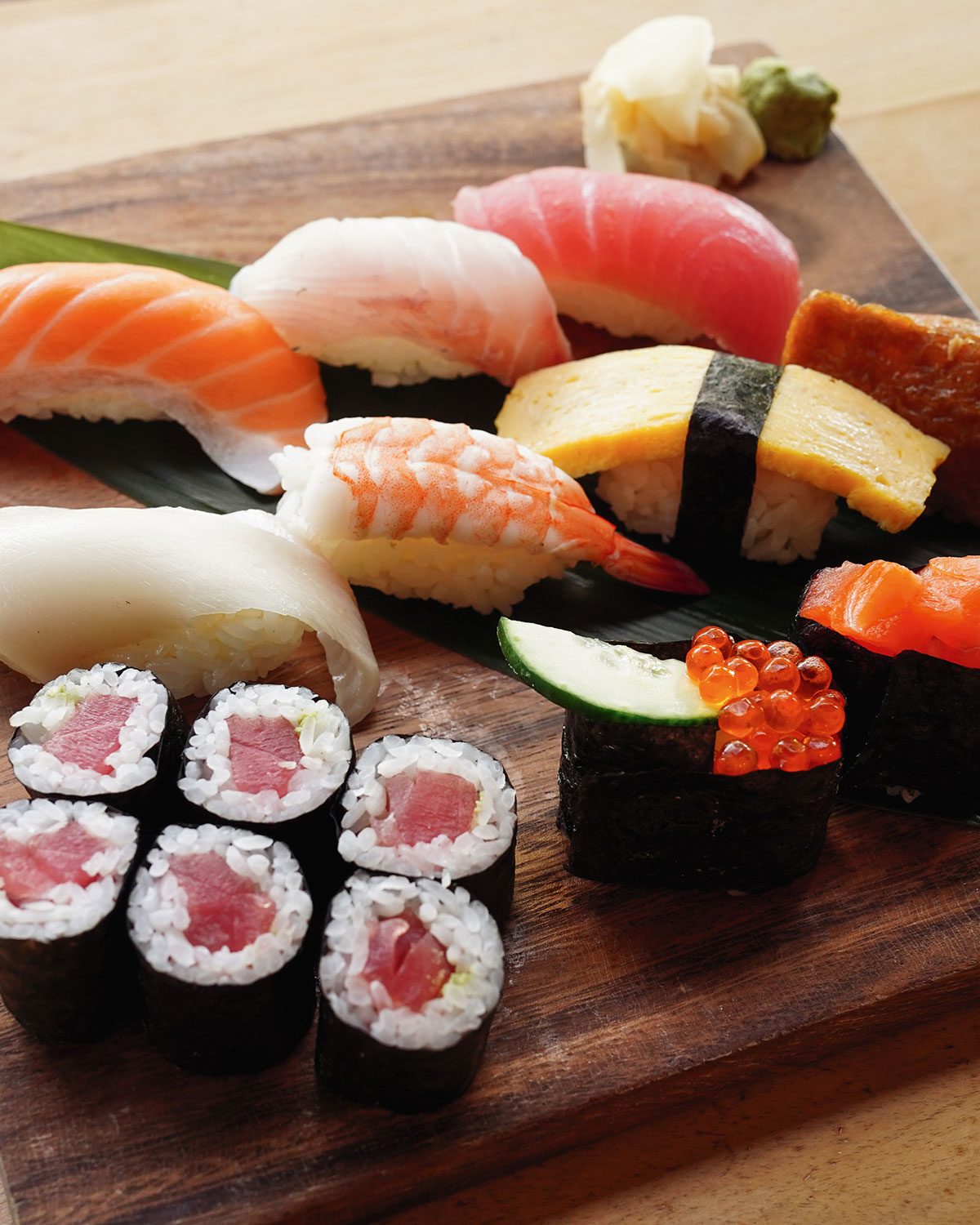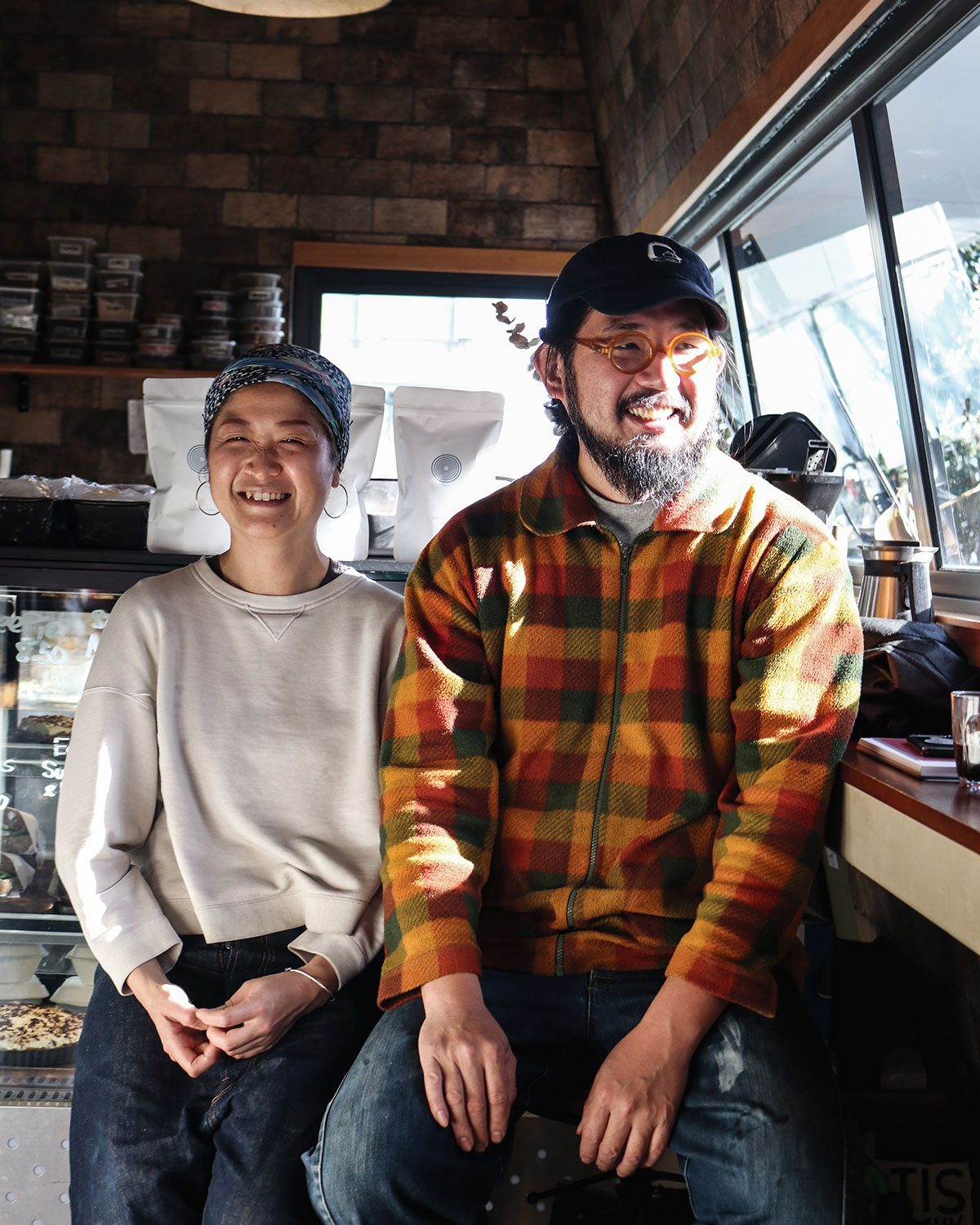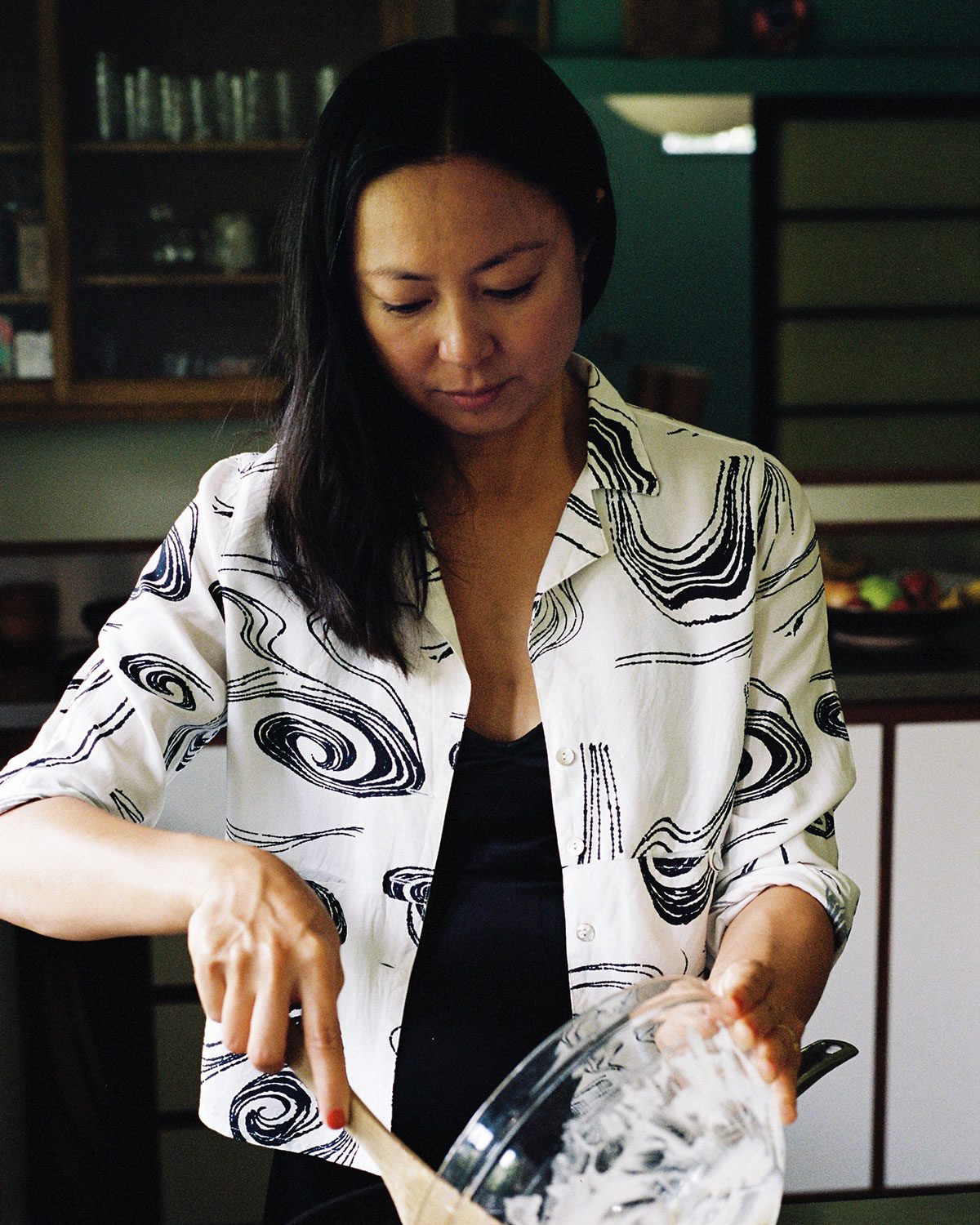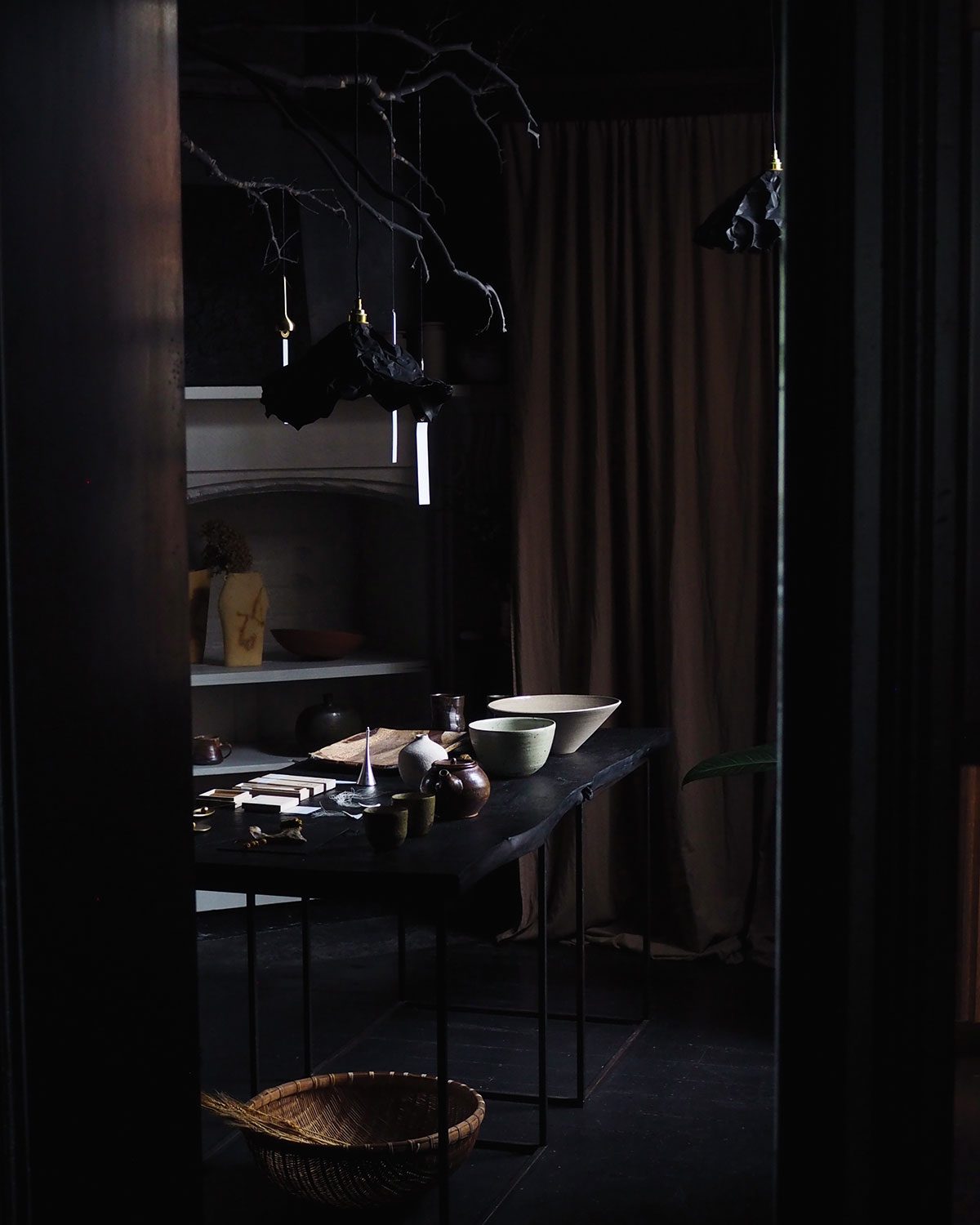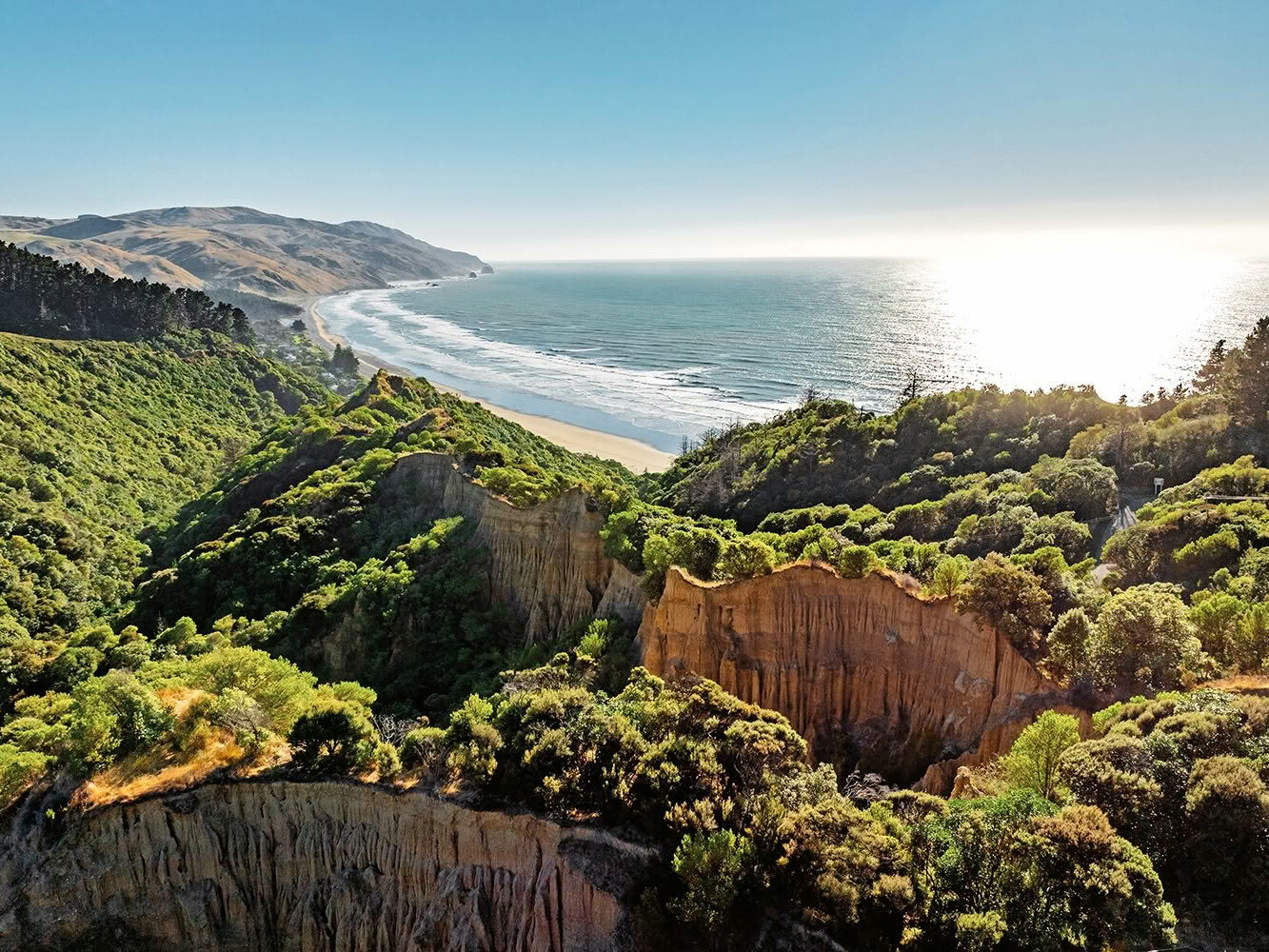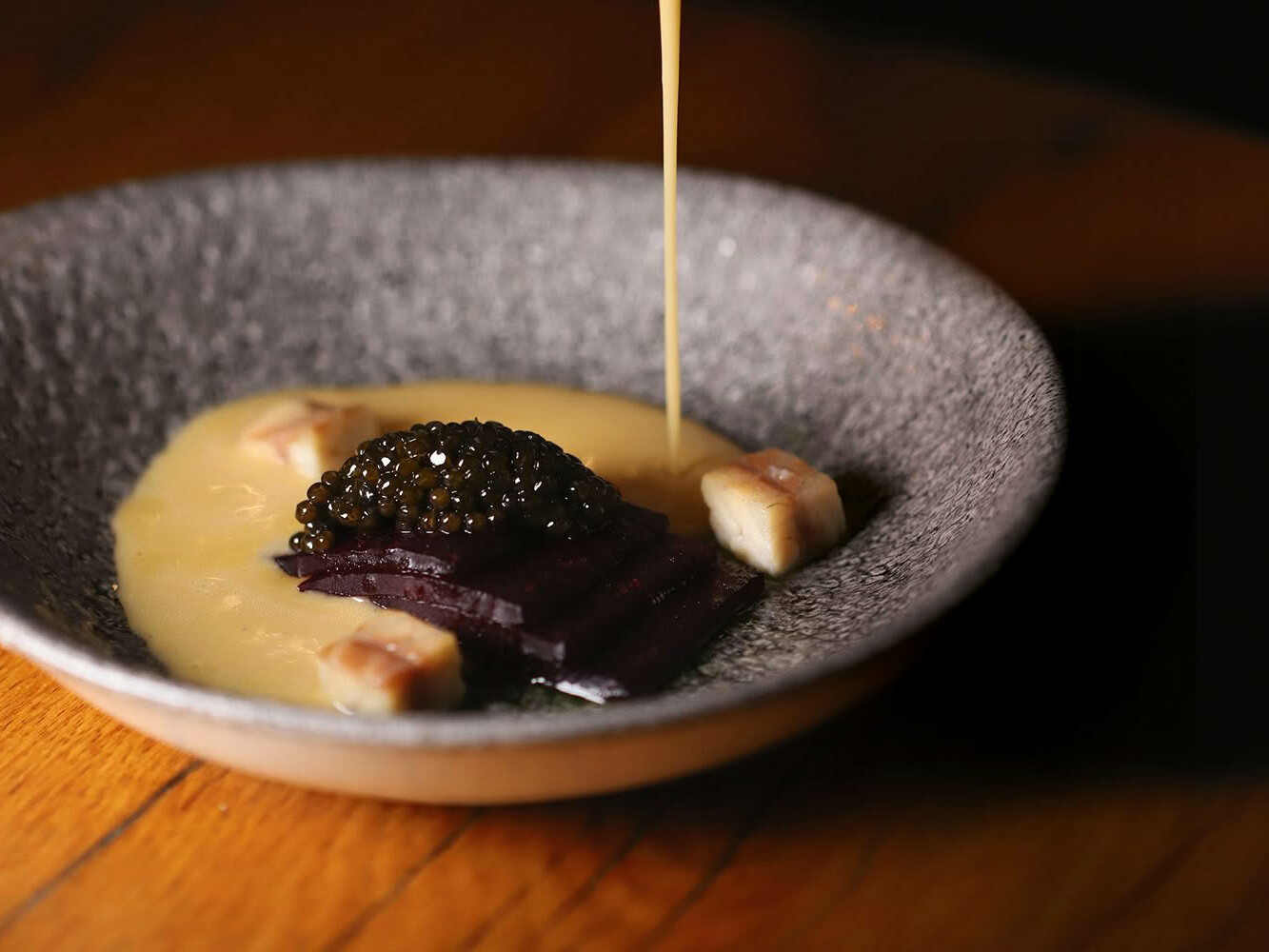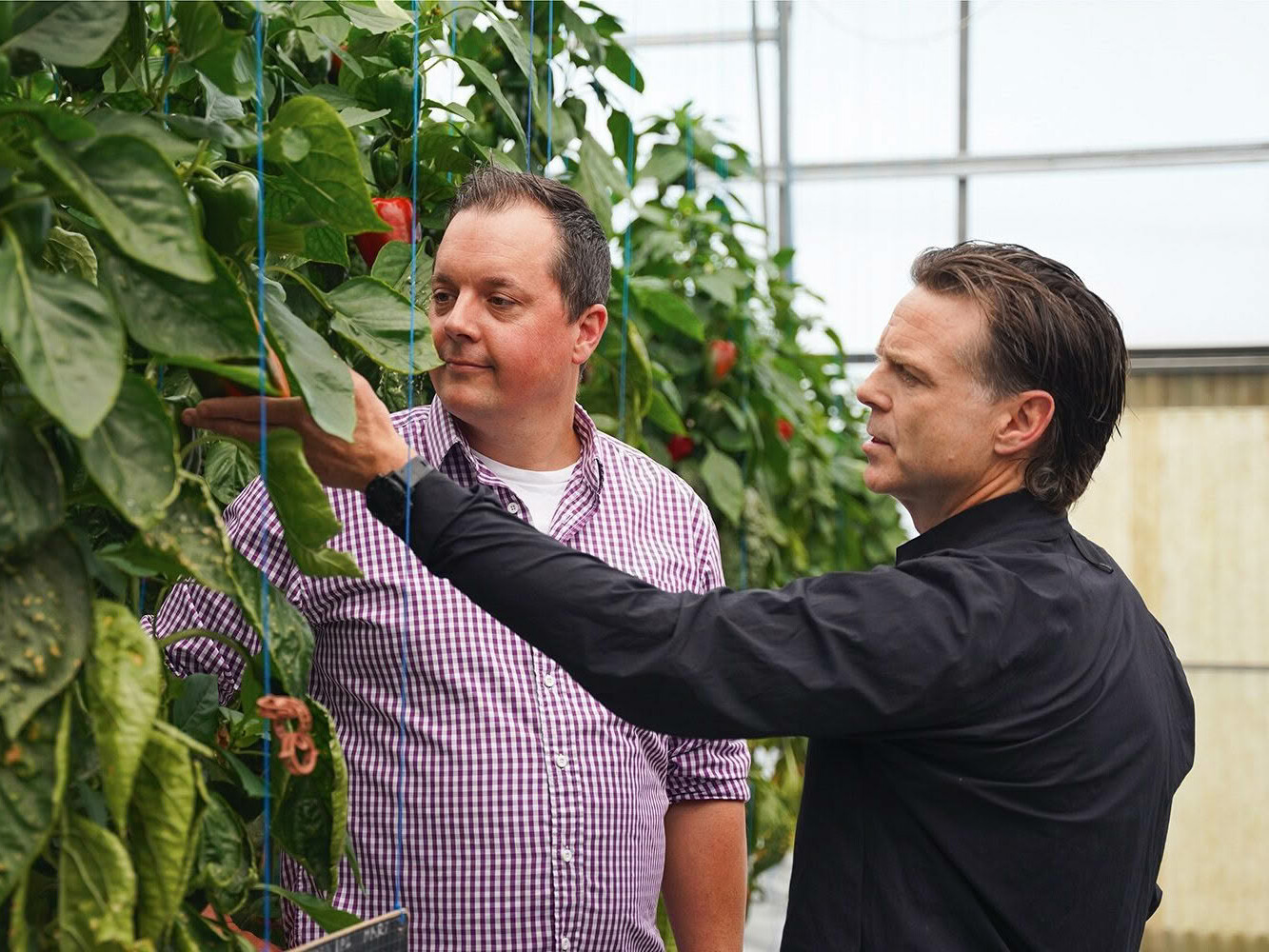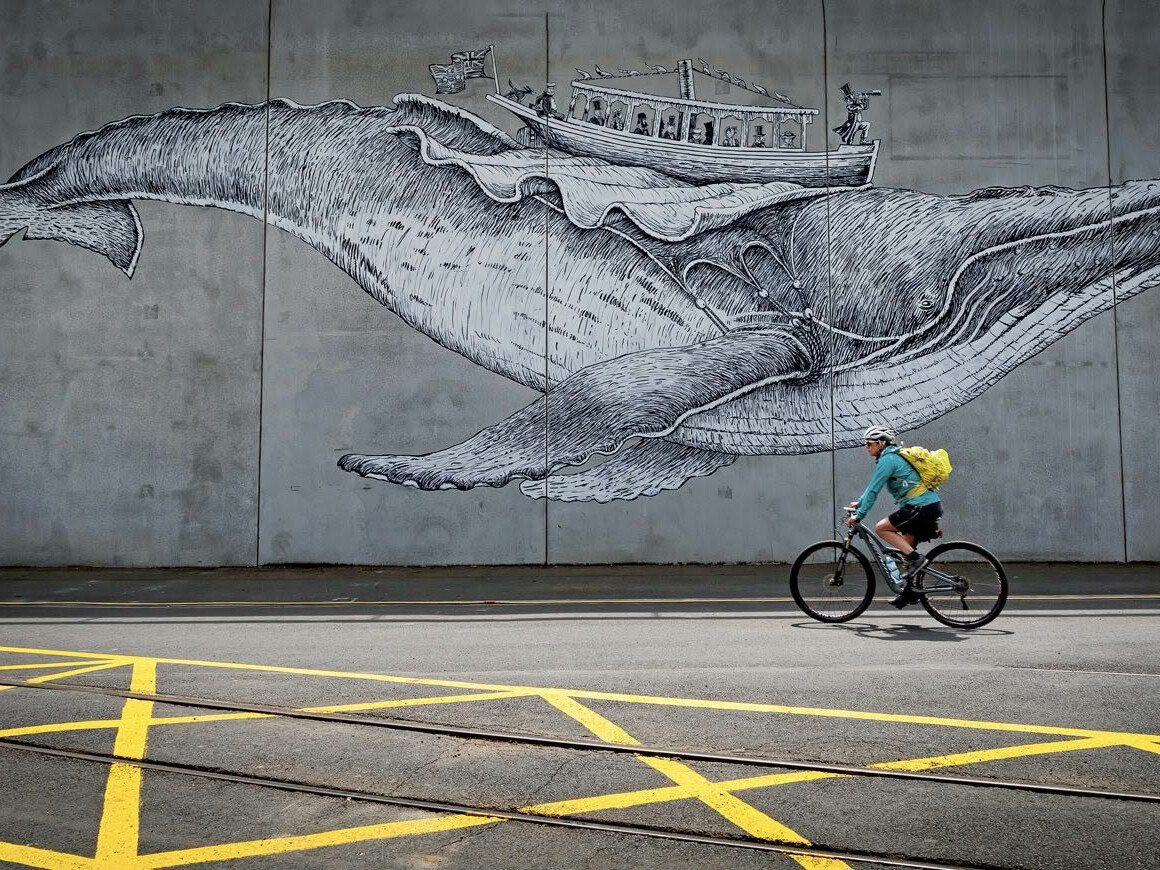Dotted round the motu are food and beverage producers with Japanese roots and sensibilities. Here are some of the best.
Sheltered from the intense Hawke’s Bay sunshine by little hats, Japanese table grapes grow into perfect plump specimens, some the size of golf balls, under the watchful eye of workers at Budou Senshin in Clive. The bulk of third-generation grower Tetsuya Higuchi’s crop is grown in Yamanashi Prefecture near Tokyo, but establishing a Southern Hemisphere site in Hawke’s Bay in 2016 has proven a success in extending supply throughout the off season. High sunshine and low rainfall sees Clive outperform Yamanashi in both yield and antioxidant levels. Most of the crop is destined for Japan (where a prime bunch can sell for several hundred dollars) but some makes it on to local tables via Chantal Organics in Napier, and into local restaurant kitchens via Megan Corbett’s Elemental Food distributors. budousenshin.com/en
Made in Nelson using local and organically grown soy beans by former chef Takehito Maeda and wife Mie, Urban Hippie organic miso products deliciously boost flavour in your home kitchen. Try the umami salt as an alternative to regular salt, the Misomite (white miso) as a dip with crudités and the superb miso dressing drizzled on everything. miso.co.nz
Operating largely behind the scenes, Gisborne-based Kiwi Success exports premium East Coast produce such as butternut squash and sweetcorn to Japan, and supplies local restaurants with New Zealand-grown yuzu and other citrus, as well as importing a select range of exciting things from Japan. A retail side is emerging and would-be customers can get in touch to order directly, according to General Manager Masa Takahashi.
Among the goodies Masa is bringing into the country are sakes by boutique brewery Heiwa – and if you are interested in learning more about sake and purchasing you can sign up online to Masa’s Sake Club to receive a charming newsletter showcasing his pick of sakes and the bars and restaurants in both Aotearoa and Japan that serve them. kiwisuccess.co.nz
Aotearoa’s own sake brewery can be found in the heart of Queenstown. Zenkuro is a meeting of minds and talent from both here and Japan, and it produces world-class sake using polished rice from Japan and pristine Southern Alps water. Head brewer and company director Dave Joll says those new to sake might like to start with his drip-pressed Shizuku Shibori Junmai Ginjo. “It’s gentle and soft, lower in alcohol and with a fruity aroma. From there I’d guide them into our rock-pressed Wakatipu Sleeping Giant Junmai Ginjo, followed by our cloudy nigori sake and our plum sake, then we’d end up with our Aoraki Junmai Daiginjo, which is more complex in style.” Zenkuro is the only brewery outside Japan authorised by the Sake Sommeliers Association of London to offer the onsite, practical component of training for its students. There’s also a one-day introductory course for anyone wanting a quick upskill on sake. zenkuro.co.nz
An excellent place to try Zenkuro is Auckland’s Harbourside, which recently opened a dedicated sake bar with an enviable outlook over Princes Wharf. It boasts a seriously good showing of sake – a good range of premium picks from Japan as well as Zenkuro – plus Japanese spirits and wines to complement the special menu offering platters and small bites: fresh oysters and sashimi, sushi and other moreish morsels. Here’s a great pairing pick to highlight Dave Joll’s point about umami with sake: the wagyu beef tartare, smoked oyster cream, cured egg yolk, crispy nori and potato crisp – try that with Pure Black, Yukino Bijin, Kid Jummai Ginjo or Doburoku sake. harbourside.co
Among some of Aotearoa’s most respected winemakers are a significant number hailing from Japan. Among them are Folium (folium.co.nz), Osawa (osawawines.co.nz), Kimura Cellars (kimuracellars.com) and perhaps one of the most internationally recognised for its incredible pinot noir, Martinborough’s Kusuda (kusudawines.com).
REFINED DINING ESTABLISHMENTS WITH A JAPANESE PEDIGREE
Cocoro in Auckland continually bags awards and wows diners with its impeccable cuisine, drinks programme and service, without falling into the hype scene. Growing up in a Zen Buddhist temple in Saga, Cocoro’s chef and co-owner Makoto Tokuyama’s guiding principle has remained a steady pursuit of improvement. In our short-attention-span world, the offering at Cocoro can appear static, but it is forever undergoing subtle progression. Quality trumps cost when it comes to ingredients – not just those obvious on-the-plate items, but behind-the-scenes players, too. From his hometown Saga in Kyushu, Makoto sources three types of premium short grain rice, nori seaweed and the soy sauce that is the foundation of Cocoro’s sushi and sashimi sauce. Locally, items such as fresh wasabi from Tākaka, wasabi leaves from Huapai, Ōra King salmon and yuzu from Gisborne and Levin make the cut. At Cocoro, the elements in every dish are singularly excellent as well as expertly orchestrated. Do not miss the signature sashimi platter, which boasts more than 30 types of seafood and takes almost an hour to plate. cocoro.co.nz ![]()
![]()
![]()
ALSO TRY:
The robata (charcoal grill) is at the heart of things at Masu by Nic Watt, and the best way to ensure you get a taste of the flavour that it imbues as well as of things wonderfully fresh and raw is by opting for the six-course Shomi menu. Don’t skip the drinks match, which elegantly pairs both local wines and Japanese sakes. skycityauckland.co.nz/restaurants/masu ![]()
A key yet unseen driving force behind what’s on the plate at Japanese chef Kazuya Yamauchi’s eponymous restaurant Kazuya in Eden Terrace is his belief that every ingredient has an optimum temperature at which it’s served. Dishes – Kazuya’s signature ‘Texture’ being a case in point – are works of art to the eye, but equally exactingly crafted for maximum enjoyment on the palate. kazuya.co.nz ![]()
![]()
Eateries focussing on one type of dish proliferate in Japan, yet are rarer to find here as operators feel they need to please a wide audience. But there are some brilliant exceptions.
Udon is popular all over Japan but its spiritual home is Kagawa (formerly known as Sanuki) on Shikoku Island. So when chef Satoru Onodera decided to open Udon Works in Auckland’s Mt Eden he first ate his way through dozens and dozens of bowls of Sanuki udon there (up to 10 bowls a day, he says) as a matter of research. A key difference in the broths here is the pricey rausu kombu from Hokkaido that Satoru uses (although dining here is incredibly good value). @udonworks
Katsu Katsu does what it says on the tin – it specialises in katsu: crumbed and fried proteins served in a set with rice, soup, salad and pickles. Honed technique sees the perfect crunch of the crumb give way to juicy and tender morsels within. A good sake offering means you can make an occasion of a meal here in Newmarket. @katsukatsu.newmarket
In a crowded category, Ramen Do stands out – not because it’s fancy or has a rock-star chef or earns spots in endless listicles. Quiet, hard-working couple Hidenobu and Eriko Tanimukai serve up ramen made from scratch in humble surroundings in Eden Terrace decorated with Eriko’s cross-stitch pieces. Hokkaido ramen is the signature here; Hidenobu trained in a famous Sapporo ramen shop, Teshikaga. It starts with pork tonkotsu broth cooked overnight (the couple live upstairs and Hidenobu ventures down to stir the pot after hours) and enriched with miso. The ramen are made by hand (you can also buy them in individual portions to takeaway), featuring the alkalising agent kansui and are dried for several days to achieve the requisite bounce against the teeth. @ramendo167
The most popular grab-and-go lunch in Japan – relegated to the quiet end of the counter at chain sushi stores here – is the focus at Miwa Gowing’s wee onigiri joint Okome in Mt Eden. Miwa makes hers fresh throughout opening hours and the fillings range from popular – teriyaki, tuna mayo – to more traditional braised burdock or lotus root, miso eggplant and grilled eel. @okome_mounteden
MORE DINE-IN & TAKEOUT OFFERINGS
Queenstown’s Kappa is an unassuming gem with especially excellent sashimi. See more in this article. facebook.com/KappaQueenstown
Mt Maunganui’s Izakai marries Japanese cuisine with kai Māori – try the pork belly ramen with pork bone and watercress broth. izakai.co.nz
As a tourist hotspot Rotorua is known for decent Japanese dining – try Yamato (yamatojapaneserestaurantrotorua.com) and Mr Yakitori (distinctionhotelsrotorua.co.nz/rotorua-restaurants/mr-yakitori).
Coffee Pen in Auckland’s Eden Terrace brings touches from owners’ Yasuji and Fumi Hisai’s motherland to the menu in dishes such as matcha cheesecake and wagyu and mozzarella pies, plus the coffee is excellent! coffeepen.co.nz
Salmon fans will love Tekapo’s Kohan, which makes the very most of the stunning fish farmed in glacial dams in the region – try the Kabayaki salmon, pan-fried in dark soy sauce with sansho pepper. kohannz.com
Get your fix of classics such as kare pan, sando and chiffon cake at Japanese bakery Mizu Bread in Eden Terrace, plus you can order daily bento for lunch. @mizu_bread
Ramen Takara has two Auckland branches as well as a food truck, and a new outpost in Yokohama, Japan (see article). It was the first ramen shop here to cater to gluten-free and vegan diners – try the vegan tan-tan ramen, which has roots in China’s dan dan mian and offers an extremely moreish explosion of spicy and sour flavours. ramentakara.co.nz
UP YOUR HOME GAME
Not your typical cookbook, Auckland-based culture writer and journalist Akiko Kurematsu’s Mother Tongue is a quiet triumph: a delightful, touching insight into washoku (traditional Japanese cooking). Inspiration came during the pandemic, says Akiko, when she was cooking from her mother Kozue’s own cookbook featuring recipes from her grandmother, Fusae. Available at akikokurematsu.com
Tableware elevates any Japanese meal and Public Record on Auckland’s Ponsonby Rd carries a carefully considered range crafted by artisans here and in Japan. Owner Yuka O’Shannessy runs workshops on kintsugi – the art of repairing broken pottery with lacquer and gold – and events showcasing Japanese culinary traditions such as a tea ceremony with sweet pairings. Read more from Yuka. publicrecord.shop
ON SCREEN
Our fascination with Japanese culture (especially its food) doesn’t stop at recipes. Myriad films and documentaries delve deeper into the stories behind those immaculate and elaborate kaiseki meals, the appreciation of single perfect fruit or a steaming bowl of ramen. Here are some of our favourites. Chef’s Table (Vol 1, Episode: Niki Nakayama) The journey of Niki Nakayama to her Michelin-starred restaurant (n/ naka) where she serves her take on modern kaiseki cuisine (Netflix). Jiro Dreams of Sushi An engaging portrait of 85-year-old Jiro Ono, the most famous sushi chef in Tokyo, whose award-winning eatery is a destination spot for sushi lovers (Apple TV). The Final Table (Episode: Japan) Yoshihiro Narisawa, owner and chef of two-Michelin star restaurant Narisawa in Tokyo judges the contestants as they strive to produce a three-dish kaiseki meal that displays seasonality and a progression of flavours (Netflix). The Birth of Sake The story of passionate saké-makers at Yoshida Brewery, a 144-year-old family-owned small brewery in northern Japan (Apple TV). The Netflix street eats series hits Osaka to visit a beloved izakaya Toyo Izakaya in Street Food (Episode: Osaka). David Chang unearths pizza Japanese-style in Ugly Delicious (Episode: Pizza) on Netflix. The refined art of kaiseki isn’t where you’d expect to find pizza – but Yoshihiro Imai perfects the art Chef’s Table: Pizza (Episode: Yoshihiro Imai: Netflix). Salt, Fat, Acid, Heat (Episode: Salt) Salt and seasoning are at the fore here as Samin Nosrat visits a salt farm in Hiroshima, delves into the making of organic miso and meets a fifth-generation soy sauce brewer (Netflix).
SEE MORE FROM CUISINE
Right here, right now
Alexia Santamaria visits North Canterbury where a super-local contest…
Suculent where the sauce is the soul
As in any thriving city, hotspots come and go and with so much to…

